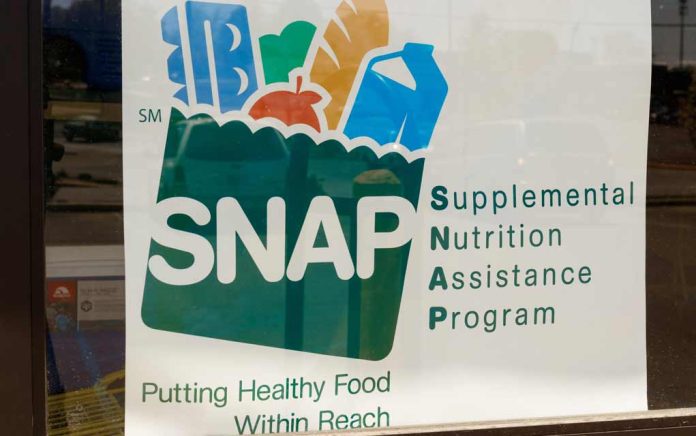
(RepublicanNews.org) – Free money and resources always sound good, right? That is until you realize that nothing is free and some “resources” are more like traps. Those who have never had to use these resources may not fully understand the trappings of the process itself. Some insight into how the situation unfolds may shed some light on how people get stuck in it.
Qualifying for SNAP or TANF
It’s not easy to qualify for either of these programs, which are by no means a sustainable way to live. Let’s take a look.
TANF: TANF stands for Temporary Assistance to Needy Families. It’s meant to exist in place of child support. That means the custodial parent has very limited income and is receiving very little money, if any, from the absent parent. The income requirements vary by state, but they’re not very high, so someone has to be essentially at the poverty line to qualify.
Parents also have to agree to work with the state to pursue a child support case against the absent parent in order to receive assistance. Once the absent parent starts paying the support, the custodial parent does not get it. Instead, the state gets the support until the TANF that was paid out has been reimbursed. That means, for a time, the custodial parent is right back where they started — getting nothing.
SNAP: The Supplemental Nutrition Assistance Program (SNAP) was never meant to be the main resource for families to look to in order to obtain food. Yet, rising costs of living often mean this is the only recourse some families have. In most states, a family of two has to have less than $2,250 in gross (pre-tax) income in order to qualify for this assistance. Even then, that doesn’t mean they qualify for the maximum amount. Households with seniors over 60 or a disabled person can have pre-tax income up to $3,500.
One of the most bizarre parts of qualifying for assistance involves the incoming/outgoing funds assessment. If your bills exceed your income, you’re ineligible for assistance. Why? Because as far as the state is concerned, if your income is less than your bills, you’re going to lose your home anyhow and you have to have an address to get assistance. But, this begs the question of why you would be asking for assistance if you could survive without it?
Living With Benefits
Getting any sort of assistance requires an in-depth look into your finances in all ways. In some cases, it even involves putting a price on the time you spend with and without your child if you have one. Qualifying for assistance is just the start. Surviving and working your way off of assistance is a trap of its own.
Once your income exceeds the levels allowed by state standards, you no longer qualify for the help. In some cases, those who successfully work toward this end are allowed to remain on assistance for a limited amount of time. The problem is, exceeding the income standards means making just $1 over qualifying standards can be a game-changer.
Though $2k is the limit for a 2-person family to qualify for help, it allows for an easy starting point. That means earning $2001 could mean a loss of all forms of assistance — and that’s gross income. By that calculation, $1541 (after taxes on a $2k income), is too much to qualify for assistance. This, in a world where the potential for basic survival is questionable at anything less than $2k net for one person, much less two.
This is the trap that anyone who gets benefits is aware of. In some cases, they end up having a better chance at survival if they either never reach limited success or they need to make extraordinarily huge leaps of success to get out of the trap at all.
Copyright 2020, RepublicanNews.org







